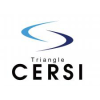On April 11, the Environmental Protection Agency (EPA) proposed new health protections to reduce exposure to Ethylene Oxide (EtO). These include a proposed rule regulating ethylene oxide (EtO) sterilizers of medical technology and other commercial uses through the National Emission Standards for Hazardous Air Pollutants (NESHAP) under the Clean Air Act, and a proposed update of EtO registration as a sterilant under the Federal Insecticide, Fungicide and Rodenticide Act (FIFRA).
If finalized, EPA’s proposals are estimated to cut EtO emissions to the air from commercial sterilization facilities by 80% per year and apply more protective standards to control those emissions under the law. In its announcement of the proposed regulations, the agency stated that these proposals will provide a comprehensive approach to addressing EtO pollution concerns, including cancer risk, that will increase safety in communities and for workers while providing a path to maintain a robust supply chain for sterilized medical equipment.
“EPA’s number one priority is protecting people’s health and safety, and we are committed to taking decisive action that’s informed by the best available science,” said EPA Administrator Michael S. Regan. “These proposals build on EPA’s extensive outreach to communities across the nation and reflect close coordination among key federal partners. Together they would significantly reduce worker and community exposure to harmful levels of ethylene oxide. EPA will continue to use every available tool to safeguard our nation’s communities, including workers, from exposure to toxic chemicals and to deliver important public health protections.”
Proposal To Reduce Air Emissions
Under EPA’s Clean Air Act authority, the agency is issuing a proposed rule outlining new requirements for 86 commercial sterilizers across the country. The agency noted that, while many of these facilities have already taken steps to reduce emissions, the proposal will require all 86 facilities and any new facilities to comply with these stricter pollution controls. All commercial sterilizers will also be required to use advanced source monitoring methods to confirm that these pollution controls are operating effectively. Facilities would be required to report results to EPA twice per year. Under the proposal, facilities would be required to comply with these new requirements within 18 months. This represents an expedited timeline under EPA authority.
FIFRA Exposure Safeguards
In addition to new emissions standards, EPA is proposing a comprehensive set of new mitigation measures under FIFRA to decrease risk for workers who use EtO to sterilize products and for other people in communities near sterilization facilities. These include:
- Prohibiting certain uses of EtO where alternatives exist including use in museums, archival settings, beekeeping, some cosmetics, and musical instruments;
- Reducing the amount of EtO that may be applied for medical device sterilization while meeting applicable standards for sterility assurance;
- Requiring engineering controls that reduce worker exposures to EtO, such as automation or emissions capture technology; and
- Mandating Personal Protective Equipment (PPE) in sterilization facilities when EtO is detected using state-of-the-art monitoring technology.
The agency stated that some commercial sterilization facilities have already successfully implemented some of these measures, including reducing the amount of EtO used for sterilization and installing engineering controls that reduce worker and community exposures. The proposed regulations would require these measures nationwide. It includes different timelines for controls depending on their complexity and feasibility.
EPA is also proposing real-time monitoring of EtO using technology that can accurately measure EtO within sterilization facilities down to 10 parts per billion (ppb). If levels surpass 10 ppb, workers would be required to wear PPE. The agency is also instructing industry to develop technologies and methods to identify lower concentrations of EtO, below 10 parts per billion (ppb), inside contract sterilization facilities.
EPA’s proposal also includes new data collection and reporting requirements that would help identify and improve protective monitoring technologies and assess the effectiveness of the proposed mitigation measures. Based on this data, EPA intends to initiate the next round of registration review for EtO earlier than the mandated timeframe, including assessing these measures and incorporating additional protections based on advances in technology that occur.
In response to the announcement, Scott Whitaker, AdvaMed president and CEO, released the following statement: “This issue is critical for patients, and as a result, the stakes are high. Ethylene oxide sterilization facilities are at capacity. As the FDA recognizes, many medical devices simply cannot be sterilized by another method. If new EPA regulations force sterilization facilities to close, patients could face treatment delays as sterile technology supplies, such as pacemakers and surgical equipment, fall short. For 80 years, the medtech industry has used ethylene oxide to sterilize medical equipment. We have done so in a manner that is both safe and effective for patients and for communities and employees. If we have careful coordination with the EPA, we are confident we can deliver for all interests as these regulations are refined and finalized.”
Whitaker noted that medical device sterilization is only half of 1% of all commercial EtO use, and that it is the only effective, viable sterilization method for heat- or moisture-sensitive materials. “Because EtO sterilization is at capacity, closing even a few sterilization facilities could cause supply shortfalls affecting patients,” he said. “Two specific items cause immediate concern. One, 18 months to implement the NESHAP requirements is much too short. It could take many months for abatement equipment to arrive. Supply chains and manufacturing are still recovering from the pandemic. Two, it appears the FIFRA preliminary interim decision fails to account for the most current science as well as the best practices on employee safety medtech employs, a concern long raised by many in the scientific community amid calls for third-party expert review of the EPA’s risk assessment. The EPA’s characterization of employee risk appears to overstate the risk and disregard the strong employee protections already in practice.”







